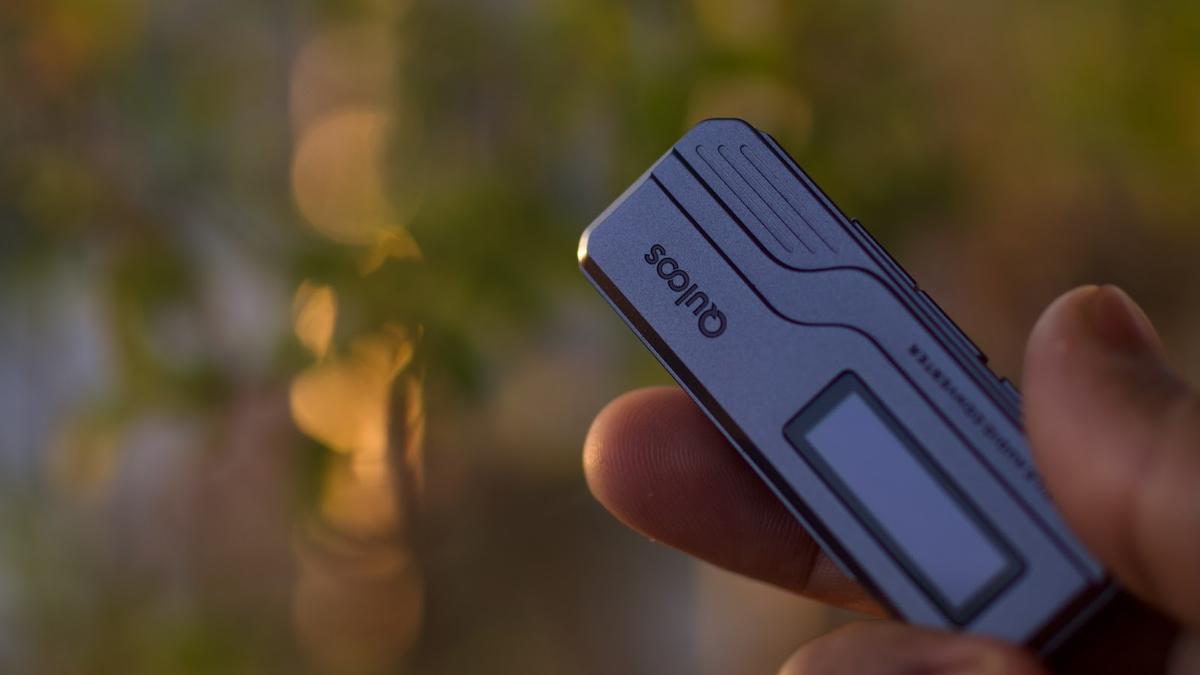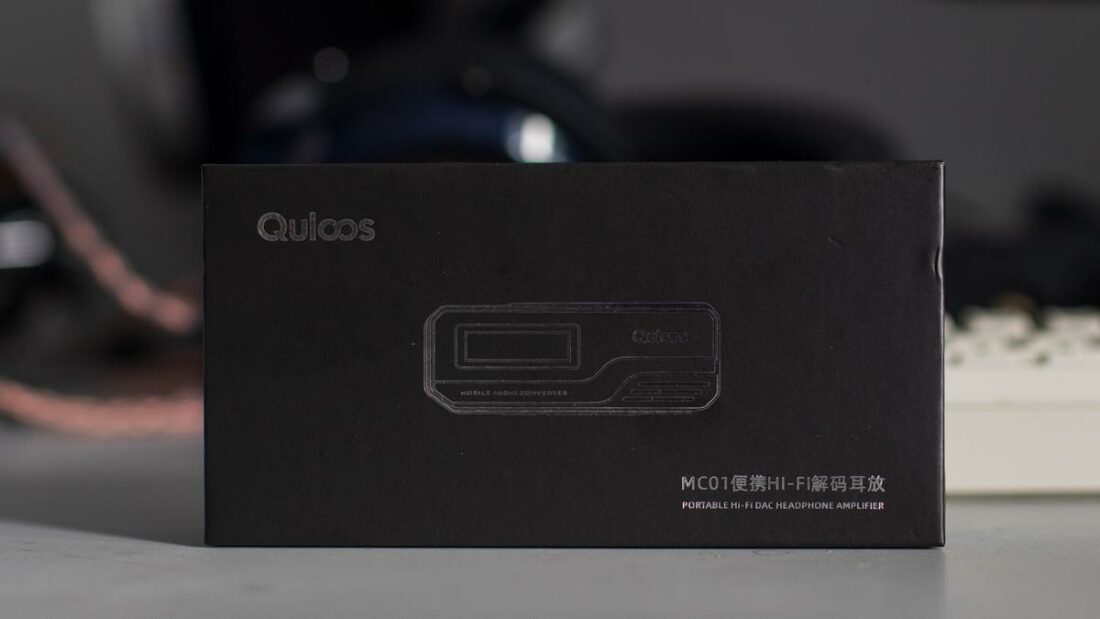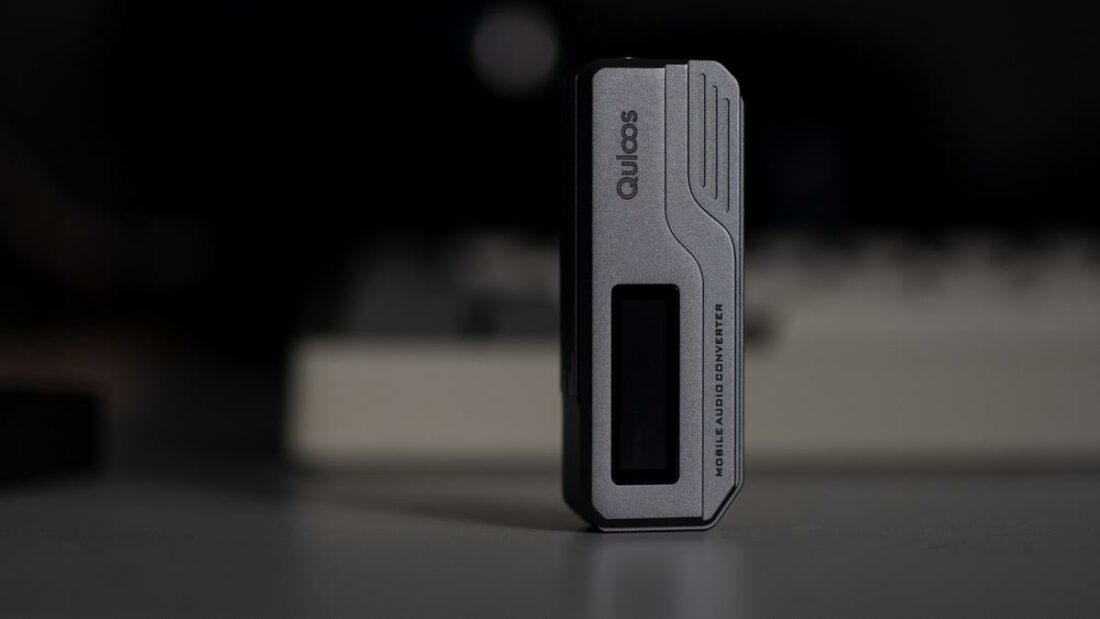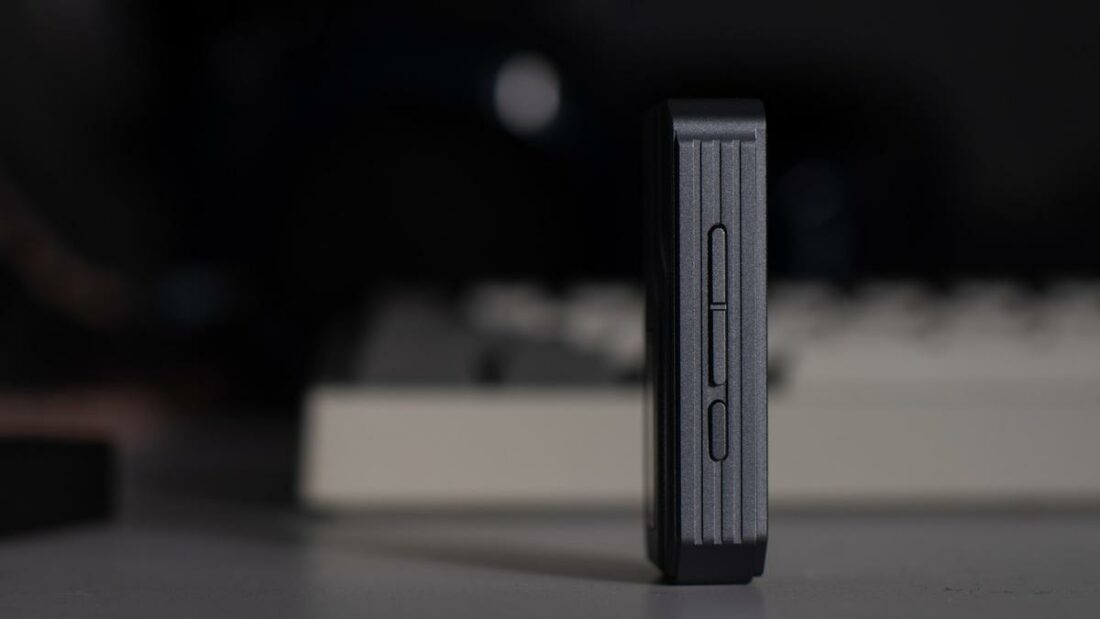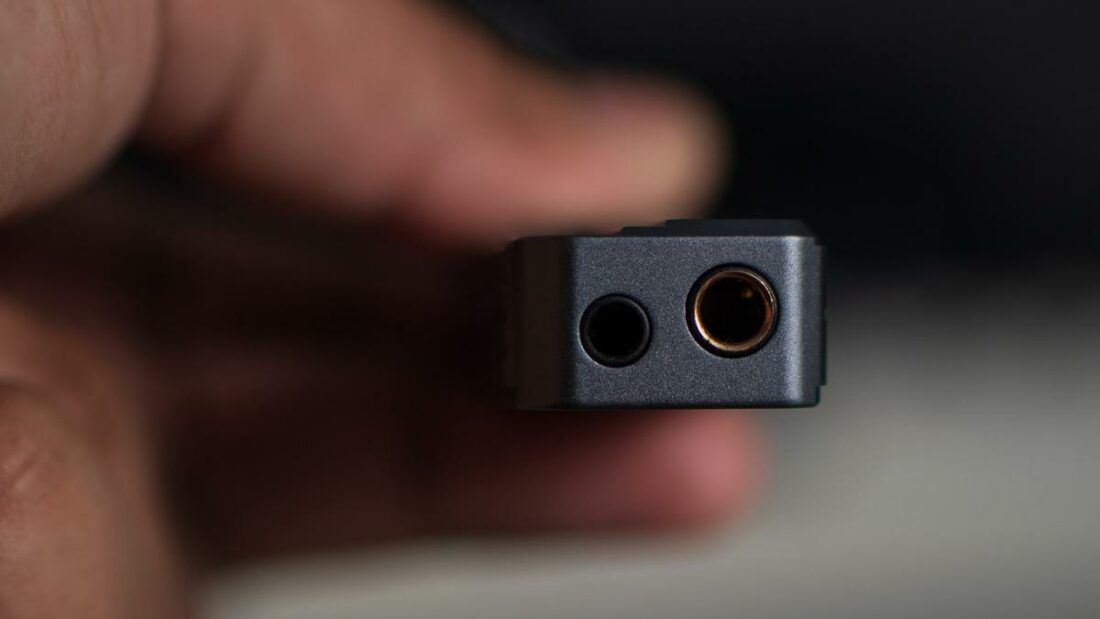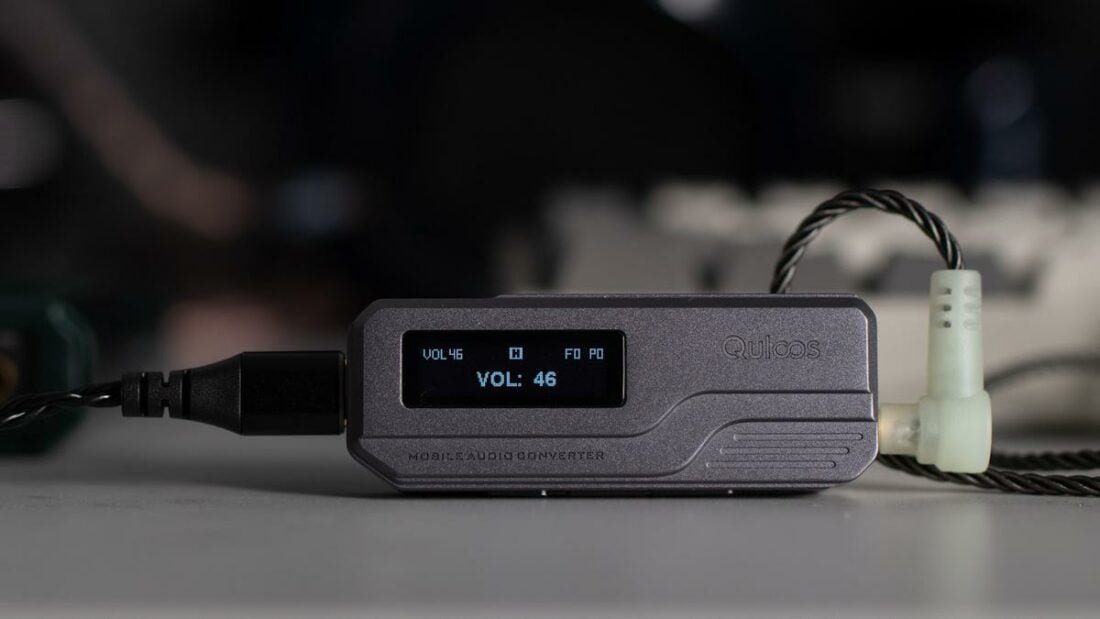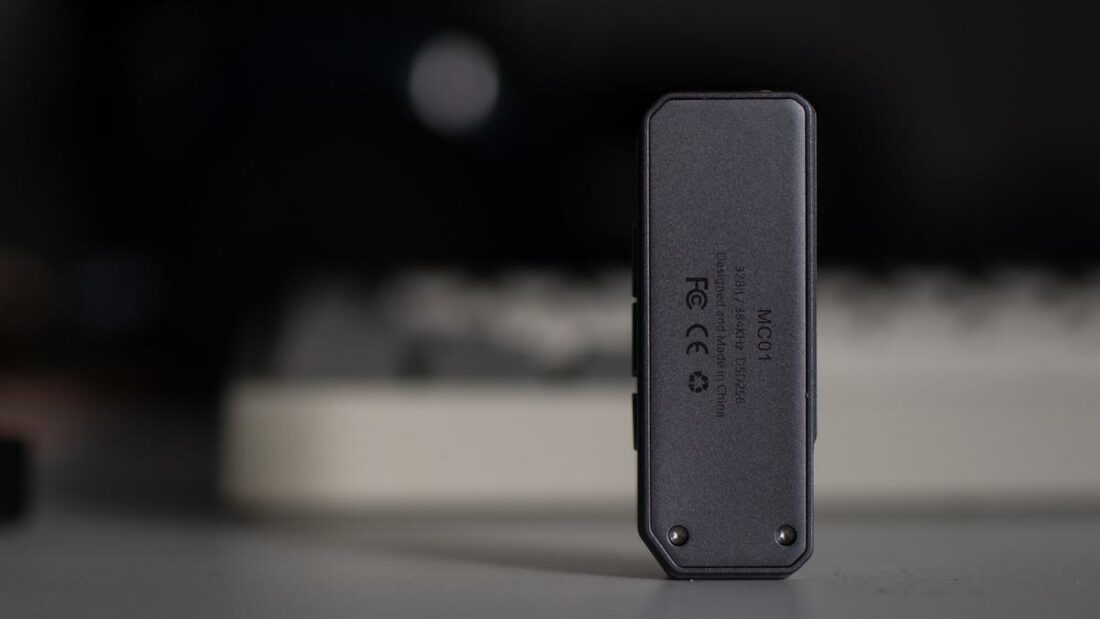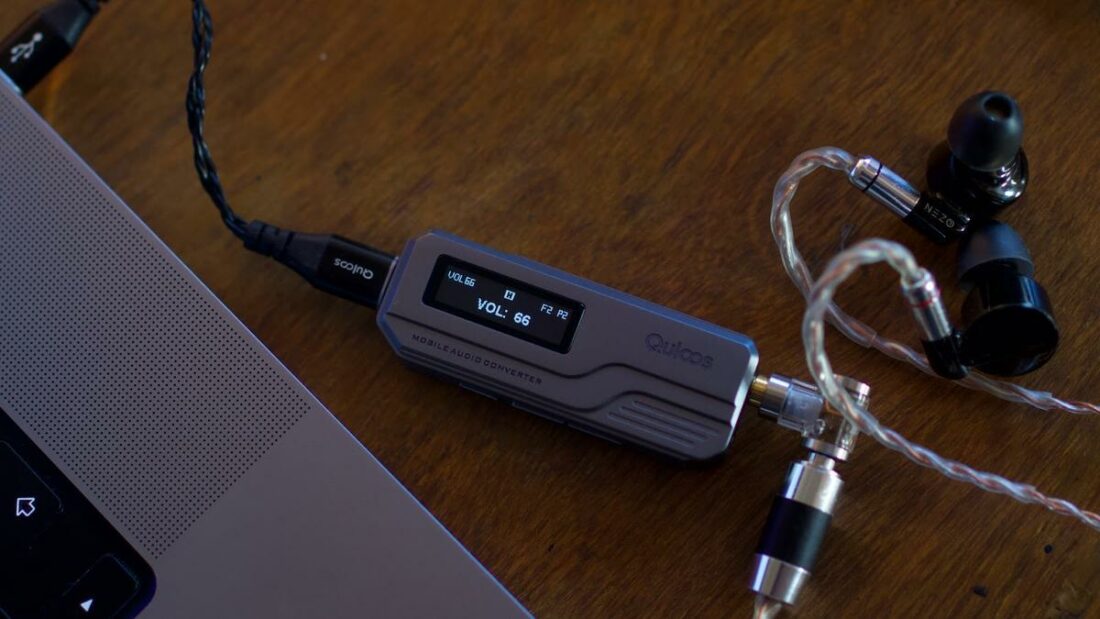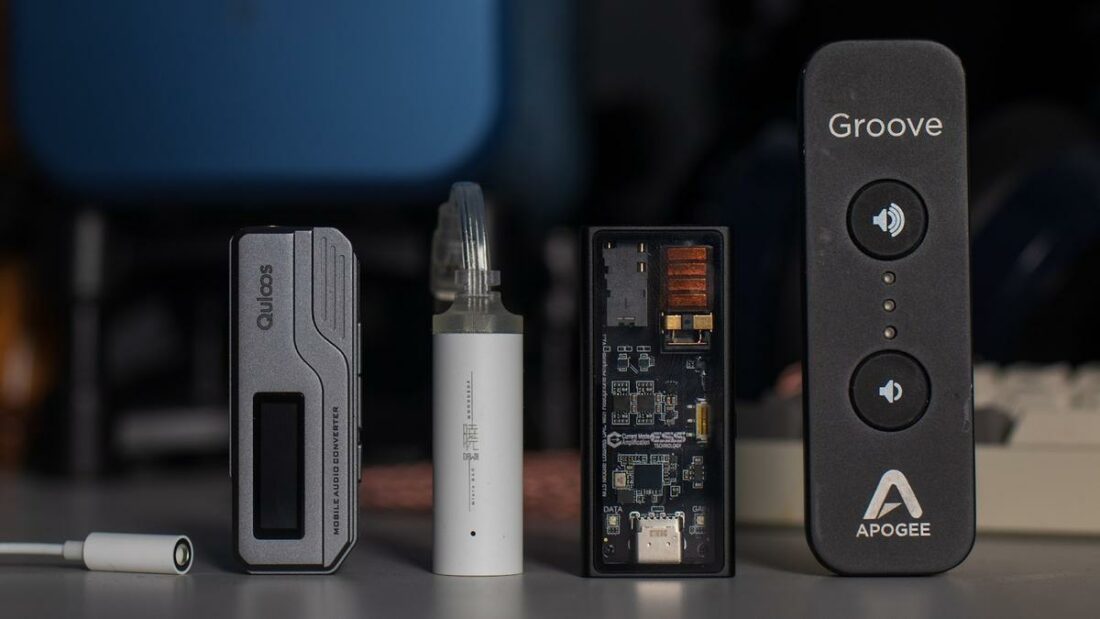A wise man once told me, “premium dongles are akin to organic vegetables – just another way of emptying your pocket with virtually the same product.” Now, I am clueless about the organic vegetable part as I rarely buy them (gotta save money for random audio gear, after all). But I have some idea about the premium dongle part, and I don’t completely disagree. Premium dongles tend to shoehorn themselves into a niche that’s neither here nor there. You can buy a feature-rich DAP at their asking price, and their spec sheet is not overly dissimilar to much cheaper dongles. Quloos is primarily known for its DAPs and desktop systems. The MC01 and MC01se are the first dongles in its lineup and bear a premium price tag. This runs the risk of suspicion on the buyer’s part, as we do not get to test out a cheaper variant first. I received the MC01 for review, which has both single-ended and balanced outputs (the MC01se has only a single-ended output). Given how most dongles are focused on the price-to-performance ratio, Quloos is in a risky position where MC01 needs to outperform some mid-range DAPs to justify its existence. Let’s see if the MC01 manages to convince.
Technical Specifications
Form: Portable DAC/Amp DAC Chip: 2 x CS43131 (dual-mono configuration) Frequency Response: 20Hz-20kHz (-3dB) THD+N: 0.00012% SNR: 131dB Noise Floor: 1.2 microVolts Codec Support: PCM – 32bit/384KHz, DSD – DSD256 Gain Settings: Normal, High Reconstruction Filters: 5, Fast and Slow (low-latency and phase compensation) modes, Non-oversampling (NOS) mode Outputs: 4.4mm balanced, 3.5mm single-ended Output Power: 260mW @ 32 ohms, 54mW @ 300 ohms (balanced), 130mW @ 32ohm (single-ended) Line-out Level: 2Vrms (low gain), 4Vrms (high gain) Controls: volume up/down, play/pause Connector: USB type-C Body material: Aluminum Dimensions: 62mm x 22mm x 13.5mm Weight: 25.4g
Packaging
Quloos MC01 comes in no-frills packaging, with the dongle placed inside a foam cutout and the accessories set underneath.
In the box
Quloos MC01 DAC/amp USB type-C to type-C cable USB type-C to lightning cable USB type-C to type-A adapter Magnetic mounting system Adhesive mounting system
The mounting systems are rather nifty and allow you to “stack” the dongle to your phone. The magnetic mount is my favorite option, as the adhesive-based one tends to catch dirt and grime. I also like the USB cables, which have pliable, multi-core wires. Overall, a solid set of accessories, though including a carrying case would’ve further sweetened the deal.
Design
It’s CNC machined from a solid block of aluminum and has subtle design cues all around. The beveled edges, ridges around the chassis to enhance grip, and screwed bottom underneath allowing access to the PCB are all really well thought out. The anodized aluminum shell is spray-painted and resistant to RF interference. The OLED display is on top, with the hardware buttons placed on one side. The top of the device houses the 3.5mm and 4.4mm ports, while the bottom has the USB type-C port. The display is a monochromatic OLED panel. By default, it shows the sample rate, volume level, gain mode, reconstruction filter in use, and power filtration mode. The buttons are used to navigate through the UI. One press of the mode button brings up the menu, and repeatedly pressing the button cycles through different options. You can use the volume buttons to change or adjust each of them.
Connectivity
The MC01 connects directly to Android phones, Macbooks, and iPads without any external driver or app installation. You will need the Windows driver to get things working properly for Windows. iPhones are supported via the supplied type-C to lightning cable.
Power Consumption
Granted, this is the power draw with the highest power filtration setting and high gain, but even then, this is really high for a dongle. Fortunately, for most IEMs, you’ll not need to push the dongle so hard. In a typical “efficient IEMs” use case, expect somewhere between 300mW – 400mW of power draw.
Internals
Quloos went for the tried and tested CS43131 chipset by Cirrus Logic. It is basically the CS43198 with an onboard amp. There are a pair of dual-crystal oscillators that further improve jitter performance. What’s unique with the MC01 is the use of triple LDO (Low-dropout regulator). The power filtration level is also selectable from the menus.
Quloos MC01 Sound
Using the default “fast” filter, the MC01 sounds somewhat analytical, with a noticeable glare in the treble region, causing most neutral, mid-forward, or bright IEMs to sound over-processed. It can get distracting, if not fatiguing. Macrodynamic punch is decent, and microdynamics (subtle shifts in volume) are not as obvious as on some desktop sources. It’s more of a nitpick, though. I like the output power, especially when connected to a laptop or PC. It can drive full-size headphones with authority (unless we are talking about low-impedance, low-sensitivity monsters). The voltage swing needs to be higher to drive high-impedance dynamic driver headphones fully, but it powers most IEMs with authority. One area where the MC01 falls short: powering low impedance, low sensitivity IEMs. One such example is the Final E5000. Having just 14 ohms impedance and 92 dB/mW sensitivity (both of which get lower with frequency), most portable devices fail to power them correctly. The MC01 is no exception. They can get the E5000 loud, but the bass lacks control, and treble air is reduced. Staging and imaging suffer as a result. The more polarizing aspect of the MC01 is the tuning itself. Apart from NOS mode, all the other filters have an aggressive, up-front signature that tends to add glare to the sound. Given most IEMs these days have prominent upper-mids, the end result is shoutiness galore. As such, I mostly used the MC01 in NOS mode, which tended to smoothen the leading edge of notes (most noticeable on snare hits). Also, this mode simulates the nature of R2R DACs rather well, which is not the case for most such dongles.
Comparisons
The Quloos MC01 is the second most expensive dongle in my collection (priced between USD$200-$300), with the Questyle M15 being marginally more expensive.
Cayin RU6
Cayin RU6 is an R2R-based dongle, which is unique in the dongle-verse. It comes with an OLED display and volume controls as well. The price is also close to the MC01, making a nice comparison. Build quality is great on both. So let’s get straight to the sound. There is a marked difference in presentation between these dongles, even when both are set to NOS mode. The RU6 sounds noticeably better in NOS mode than OS mode, so that’s what I used for this comparison. The RU6 is smoothed out in NOS mode, almost to a fault. Staging has good expansion, but depth is lacking somewhat. Imaging is also fuzzy in busy tracks. The MC01 has a similar spread in terms of staging but resolves more when it comes to fine details. The MC01 also lacks the hiss that the RU6 exhibits with sensitive IEMs. It doesn’t quite emulate the creaminess of the RU6, but it gets close. Imaging is also better on the RU6, with superior delineation between instruments. Overall, I prefer the MC01 to the RU6, though I appreciate Cayin’s efforts in bringing R2R DAC architecture to a very compact form factor.
Questyle M15
The final comparison is against the best dongle I have in my collection and the best I have tried until now: the Questyle M15. It doesn’t have a display or buttons but makes up for all those with the sound. Sadly, the MC01 is no match for the M15, with the Questyle dongle displaying better dynamics, transparency, and imaging than the MC01. Only stage width is slightly better on the MC01 in NOS mode. The power draw is even lower on the Questyle.
Where to Buy
ShenzhenAudio
Conclusion
Quloos’ first-ever dongle is ill-marketed, in my opinion, as there is not a single word about the excellent NOS mode implementation in the promo materials. The focus is solely on power filtration settings, which made little to no sonic difference in practice. The Quloos MC01 is decent, but being decent ain’t good enough anymore. In isolation, it’s a good dongle as long as you fiddle with the reconstruction filters. This aggressive market, sadly, takes no prisoners. There exists a certain Questyle M15 that curb-stomps the dongle competition all around. It’s like bringing a knife into a gunfight, and Quloos just cannot keep up with the incoming barrage.
